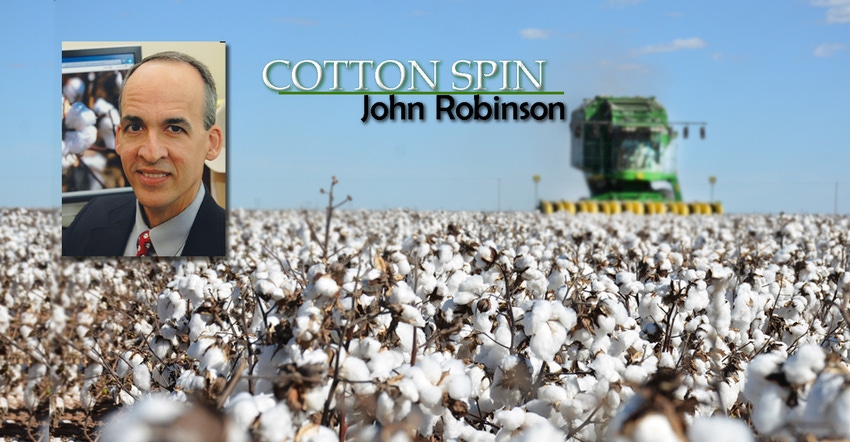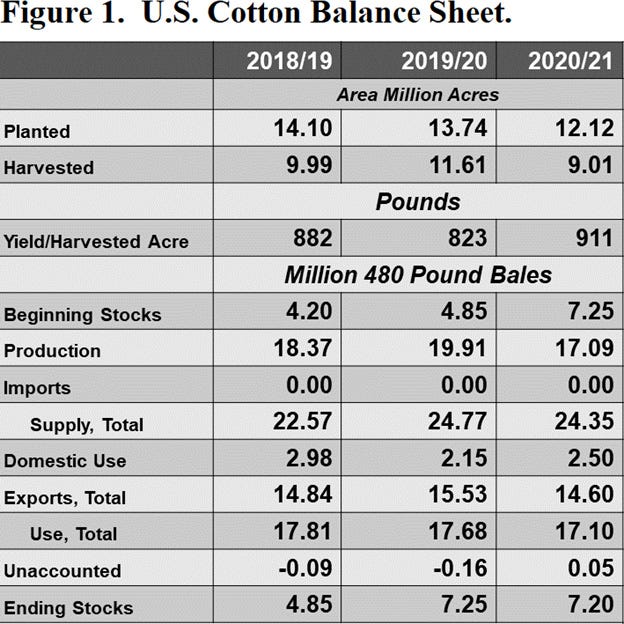
USDA’s November supply and demand forecasts include only modest adjustments to the foreign and domestic cotton balance sheets for the 20/21 marketing year.
Starting with the foreign supply picture, world carry-in was raised 380,000 bales, mostly in Brazil. World production was lowered a scant 160,000 bales, month over month, where a big cut in Pakistan mostly offset increases in Australia and China. World imports and exports were each raised a little under 600,000 bales. Like production, world consumption was coincidentally also cut 160,000 bales from the October forecast, most of which was seen in Pakistan. The bottom line of all these adjustments was 310,000 bale increase in world ending stocks, month over month, which is fundamentally price neutral in terms of the monthly adjustment. However, the resulting level of 101.44 million bales is still historically high and bearish.
For yet another month, the U.S. cotton balance sheet saw surprisingly little adjustment month over month. Pre-report analyst expectations were for a smaller U.S. crop, reflecting the potentially damaging and degrading effects of recent freezes, ice storms, and cumulative tropical events. In fact, USDA raised the average U.S. all cotton yield by two pounds per acre, translating to a minor 40,000 bale increase in 2020 production. There were no changes to U.S. domestic milling or exports. So, with the “unaccounted” fudge factor absorbing the minor change in production, there was no change in the 7.2 million bales of forecasted ending stocks (Figure 1, last column). The resulting stocks-to-use ratio thus remains above the burdensome 40% threshold level, which is fundamentally bearish, just like the foreign bottom line.

Under normal circumstances, there are typically two time periods when we see an adjustment to the U.S. production estimate. The first is in the fall, via the October or November WASDE report, when USDA combines their field sampling with incoming ginnings data. The second adjustment period is often in January when USDA FSA provides updated certified acreage data. The lack of adjustment this fall is puzzling. Does that mean that there is an unexpectedly large supply of potentially low-grade cotton? Or does it mean there will be a surprising late and large adjustment to production in January? Nobody really knows.
One parting thought. Even if there eventually is a million bale cut to U.S. production, that would still likely leave old crop ending stocks around 6.5 million, which is a historically heavy, non-price-supportive outcome. There is therefore no fundamental reason to expect vindication in the form of a large futures rally when the dang government (“FINALLY!!!!”) accounts for how small the U.S. crop is. This situation is not a political thing. It should not be an emotional thing. It’s just math. Whittling down ending stocks from 7.2 million to 6.5 million would be a move in the right direction, but it still leaves a bearish outcome.
For additional thoughts on these and other cotton marketing topics, please visit my weekly on-line newsletter at http://cottonmarketing.tamu.edu.
About the Author(s)
You May Also Like




